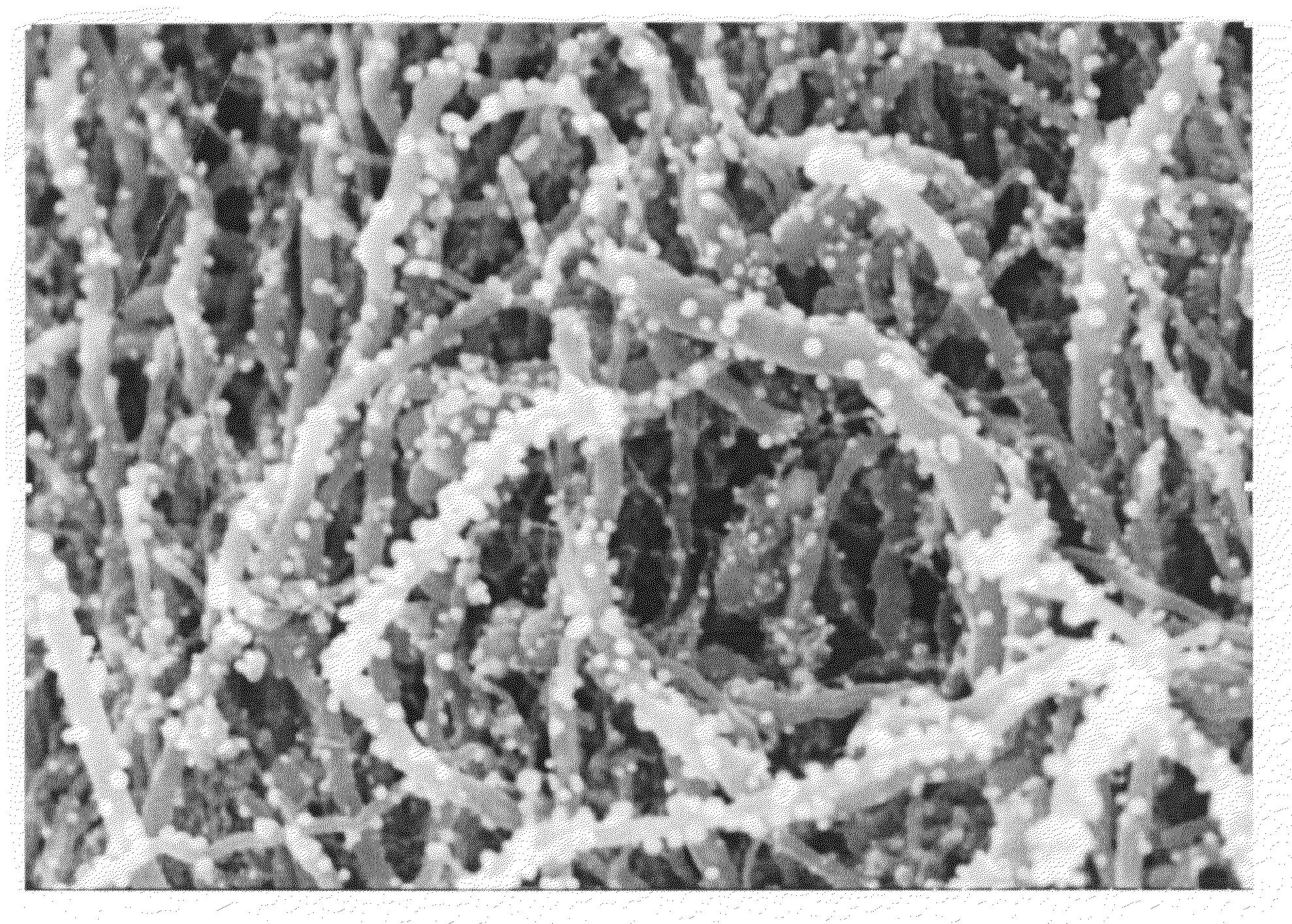Depositing nanometer-sized particles of metals onto carbon allotropes
a technology of carbon allotropes and metal particles, which is applied in the field of depositing metals onto substrates, can solve the problems of complex oxidation/reduction chemistry, process success, and complex oxidation/reduction chemistry, and achieve the effects of simple, convenient and cost-effectiv
- Summary
- Abstract
- Description
- Claims
- Application Information
AI Technical Summary
Benefits of technology
Problems solved by technology
Method used
Image
Examples
example 1
Multiwalled Carbon Nanotubes with 9% Silver Particles
[0031]Multiwalled Carbon Nanotubes (MWNT, VGE-S16) obtained from the University of Kentucky (0.100 g) were dry mixed with silver acetate (0.0155 g) using a mortar and pestle. The solid mixture was transferred to a glass vial and heated in a nitrogen oven at 300° C. for 3 hours. The theoretical amount of silver after reduction is 0.010 g and thus in theory the sample contains 9% by weight silver. The sample was removed and characterized by high resolution scanning electron microscopy (HRSEM). See FIG. 1. The silver particles are uniformly distributed along the length of the MWNTs and are less than 100 nm in size.
example 2
Multiwalled Carbon Nanotubes with 9% Silver Particles
[0032]Multiwalled Carbon Nanotubes (MWNT, VGE-S16) obtained from the University of Kentucky (4.0 g) were dry mixed with silver acetate (0.62 g) using a mortar and pestle. The solid mixture was transferred to a glass vial and heated in a nitrogen oven at 300° C. for 3 hours. The theoretical amount of silver after reduction is 0.40 g, and thus in theory the sample contains 9% by weight silver. The sample was removed and characterized by high resolution scanning electron microscopy. The silver particles are uniformly distributed along the length of the MWNTs and are less than 100 nm in size.
example 3
Multiwalled Carbon Nanotubes with 17% Silver Particles
[0033]Multiwalled Carbon Nanotubes (MWNT, VGE-S16) obtained from the University of Kentucky (0.100 g) were dry mixed with silver acetate (0.0.031 g) using a mortar and pestle. The solid mixture was transferred to a glass vial and heated in a nitrogen oven at 300° C. for 3 hours. The theoretical amount of silver after reduction is 0.020 g, and thus in theory the sample contains 17% by weight silver. The sample was removed and characterized by high resolution scanning electron microscopy. The silver particles are uniformly distributed along the length of the MWNTs and are less than 100 nm in size.
PUM
| Property | Measurement | Unit |
|---|---|---|
| particle size | aaaaa | aaaaa |
| particle size | aaaaa | aaaaa |
| temperature | aaaaa | aaaaa |
Abstract
Description
Claims
Application Information
 Login to View More
Login to View More - R&D
- Intellectual Property
- Life Sciences
- Materials
- Tech Scout
- Unparalleled Data Quality
- Higher Quality Content
- 60% Fewer Hallucinations
Browse by: Latest US Patents, China's latest patents, Technical Efficacy Thesaurus, Application Domain, Technology Topic, Popular Technical Reports.
© 2025 PatSnap. All rights reserved.Legal|Privacy policy|Modern Slavery Act Transparency Statement|Sitemap|About US| Contact US: help@patsnap.com



